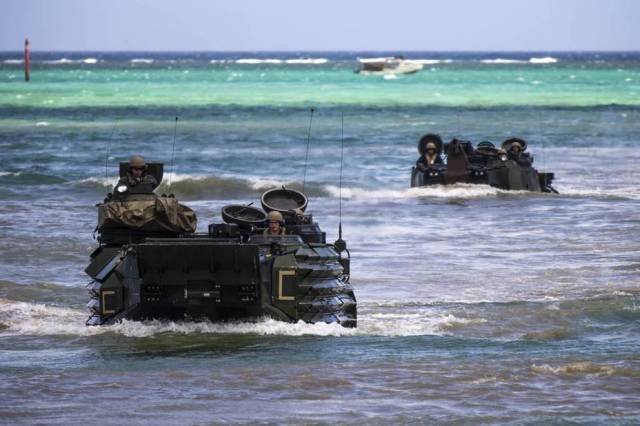After half a century of service, AAV landing vehicles lost their main feature — the ability to move through the water. Today, December 17, the portal defensenews.com He reported that the US Marine Corps has imposed a ban on the use of these armored personnel carriers as a watercraft.
In July last year, a tragedy occurred during the exercises — eight Marines and one sailor were killed in the sunken AAV. After an investigation that showed unsatisfactory sealing in most amphibious vehicles, the ILC returned to using AAV, but not for long — now they can officially participate only in ground operations.

Amphibious armored vehicles AAV
Image source: defensenews.com
Officially, the AAV was transferred to the status of a land transport due to the inability to ensure the proper level of technical condition, in which the safety of the landing will be guaranteed. This is due to the age of the machines and high operating costs —"an hour of AAV operation requires 8 hours of maintenance."
At the same time, the replacement for AAV, called ACV, is also suspended from amphibious operations. Thus, the USMC was temporarily left without floating armored personnel carriers.
"ACVs have been temporarily suspended from operations with water transport in the open ocean, as we are working to solve the problem associated with the towing mechanism. We expect that this problem will be solved in the near future, and the ACVs will return to the water in early 2022," said Major Jim Stenger, an official representative of the USMC.
AAV (AAV-P7/A1) is an amphibious amphibious tracked vehicle developed for the American Marine Corps. The vehicles entered service with the US Army in 1972, replacing the LVTP5 amphibious armored cars. The AAV has aluminum armor with a thickness of 30 to 45 mm, which provides bulletproof and shatterproof protection for the crew and the landing party. The car can accommodate up to 28 people at the same time, including three crew members. The amphibian can reach speeds of up to 64 km/h on land and up to 13 km/h on water.
